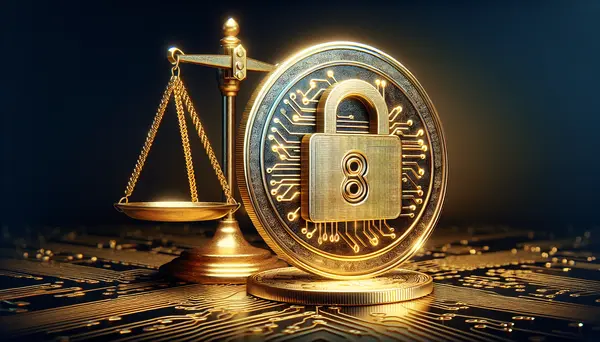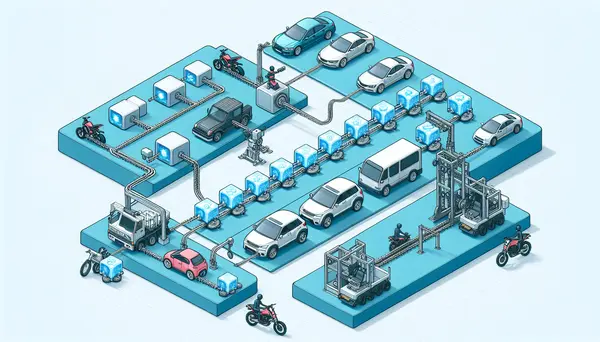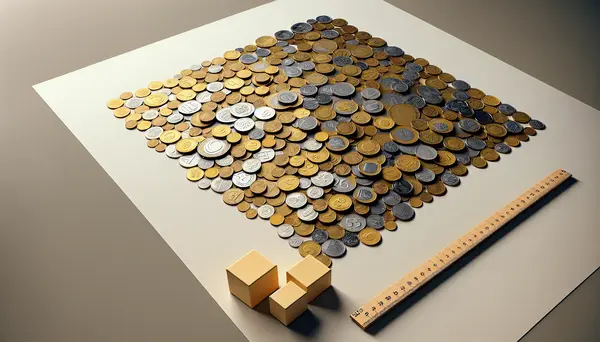Coin-Report - Cryptocurrency and Blockchain

Exploring Bitcoin Runes: Unveiling the Next Crypto Megatrend
Bitcoin and Co.: Three Reasons for the Crash In a recently published article by WirtschaftsWoche, three main reasons are discussed for the recent cras...

XRP Tests Key $0.50 Resistance as SEC Drops Charges Against Ripple Executives
XRP Faces SEC: Legal and Market Updates According to FXStreet German site, XRP is currently testing a significant resistance level at $0.50, following...

Ethereum Price at a Crossroads: Bullish Rebound or Further Decline Ahead?
Ethereum Price Forecast: Will the ETH Price Rise Again? The Ethereum price has recently experienced a significant correction, dropping to around 2,845...

Bitcoin Dips Below $60,000 as Market Tension Escalates Ahead of Halving Event
Bitcoin Temporarily Falls Below $60,000 – Nervousness Mounts In a recent article by DER AKTIONÄR, the latest drop in Bitcoin’s price, which brief...

XRP Overcomes $0.50 Hurdle as Ripple Eyes DeFi Expansion Amidst Legal Showdown and 3,000% Rally Speculation
XRP Fights Its Way Over the $0.50 Resistance The cryptocurrency XRP has managed to break through a significant resistance at $0.50. This event takes p...

Bitcoin Halving Countdown: Market Braces for Impact Amidst Tense Global Backdrop
Four Days Until Bitcoin Halving: What's the BTC Price Doing? With the Bitcoin Halving just around the corner, there's palpable tension in the air as m...

Turbulent Tuesday: Crypto Prices Whipsaw Amidst Market Volatility Ahead of Bitcoin Halving
Market Overview: Cryptocurrency Movements on a Volatile Tuesday Afternoon The cryptocurrency market is experiencing significant fluctuations this Tues...

Bitcoin Bounces Back: Is the $100K Milestone Within Reach Amid Market Volatility?
Bitcoin's Flash Crash and Recovery: A Market Update The cryptocurrency market has been a rollercoaster for investors, with DER AKTIONÄR TV reporting ...

XRP Eyes Monumental Surge as Ripple Targets DeFi Expansion
XRP on the Verge of Breakout: Anticipating a 3,000% Surge | finanzen.net According to finanzen.net, XRP is exhibiting a lackluster performance in the ...

We have compared the best crypto exchanges for you. Just take a look at our free crypto exchange provider comparison.

We have compared the leading crypto tax tool providers for you. Check out our free crypto tax tool provider comparison.
The Best Bitcoin Mining Providers at a Glance
» Infinity HashFrom our perspective, currently the best mining provider on the market. With the community concept, you participate in a mining pool completely managed by professionals. A portion of the earnings are used for expansion and maintenance. We've never seen this solved as cleanly anywhere else.
» Hashing24A well-known and established cloud hosting company. With a good entry point and in a good market phase, a good ROI can also be generated with some patience. Unfortunately, we see the durations as a major drawback.
Top 10 most read posts

Blockchain's Potential Beyond Cryptocurrency
Introduction: Blockchain's Potential Beyond Cryptocurrency When we hear the term "blockchain," most of us instinctively think of cryptocurrencies like Bitcoin and...

Understanding ICOs: Risks, Rewards, and Regulations
Introduction to ICOs Initial Coin Offerings, often shortened to ICOs, are an increasingly popular method of fundraising for new projects in...

Top 10 ICOs to Watch in 2023
Collateral Network (COLT) Collateral Network (COLT) is a next-generation decentralized lending platform that leverages blockchain technology to facilitate secure and efficient...

Blockchain's Influence on the Automotive Industry
Introduction: Unveiling the Power of Blockchain Blockchain technology is boldly advancing into a variety of industries, utterly transforming our occasional transactions...

ICO vs IPO: Which is the Better Investment?
Introduction: Understanding ICO and IPO Before delving into the difference between ICO and IPO, it's crucial to understand what these terms...

Investment Tips for the Budding Crypto Millionaire
Introduction: An Insight into Crypto Investment If you're venturing into the promising world of cryptocurrencies, a solid investment strategy can be...

Bitcoin's Rise and Fall: Historical Analysis
Introduction: Bitcoin's Dynamic Journey Bitcoin, the world's first and most recognized digital currency, is often the subject of dramatic headlines, featuring...

The Role of Cryptocurrencies in Venture Capital: A New Frontier
Introduction - Understanding Cryptocurrencies and Venture Capital As technology evolves, so does our understanding of what makes a valuable asset. The...

Mastering Technical Analysis for Bitcoin Trading
Introduction to Technical Analysis for Bitcoin Trading Trading in the cryptocurrency world, particularly Bitcoin, requires careful decision-making and strategic planning. One...

How to Build a Diversified Crypto Portfolio: A Step-By-Step Guide
Introduction: The Importance of Diversification Investing in cryptocurrencies can be both exciting and rewarding. However, it's crucial to remember that the...
- What's the role of Gas in the Ethereum network? 11
- How can cryptocurrencies be adopted in mainstream industries and what are the challenges? 2
- What are some legal and regulatory considerations when adopting cryptocurrencies in a business? 1
- How do you see the adoption of cryptocurrencies impacting the global economy? 1
- What are the current regulations for Initial Coin Offerings (ICOs) in the United States? 6
- What's your take on using browser extensions for crypto wallets? 20
- What percentage of your overall investment portfolio is in crypto? 6
- Can you explain how MakerDAO's DAI stablecoin maintains its stability? 9
- Can you explain the concept of stop-loss orders and how they can be incorporated into the technical aspects of cryptocurrency trading? 5
- Can you recommend any wallets or exchanges that support the storage and trading of rare or niche cryptocurrencies? 1

